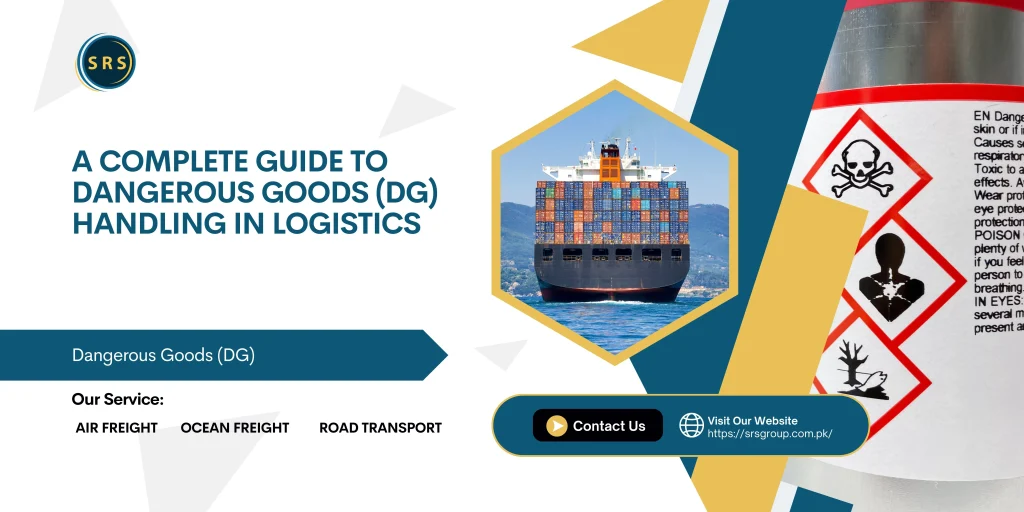A Complete Guide to Dangerous Goods (DG) Handling in Logistics
Shipping Dangerous Goods (DG) requires strict compliance with international safety regulations. Whether it’s flammable liquids, toxic chemicals, or lithium batteries, proper handling is critical to prevent hazards. This guide covers everything you need to know about DG classification, packaging, labeling, and safe transportation. What Are Dangerous Goods? Dangerous Goods (DG) are substances that pose risks to health, safety, or the environment when transported. Common types include: 💡 Fact: Lithium batteries have been involved in major air transport incidents, leading to strict airline restrictions. DG Classification & Labeling 🚨 The 9 DG Hazard Classes: Class Category Examples 1️ Explosives Fireworks, TNT 2️ Gases Oxygen tanks, propane 3️ Flammable Liquids Gasoline, ethanol 4️ Flammable Solids Matches, sodium 5️ Oxidizing Substances Hydrogen peroxide, bleach 6️ Toxic & Infectious Substances Pesticides, medical waste 7️ Radioactive Materials Uranium, X-ray equipment 8️ Corrosives Battery acids, ammonia 9️ Miscellaneous DG Lithium batteries, dry ice 📌 DG shipments require proper labeling with UN numbers and hazard symbols. Failure to comply can result in shipment rejection or fines. International DG Regulations DG transport is governed by international safety bodies: Regulatory Body Mode of Transport IATA (International Air Transport Association) Air Freight ✈ IMO (International Maritime Organization – IMDG Code) Ocean Freight 🚢 ADR (European Agreement on DG Transport) Road Transport 🚛 ICAO (International Civil Aviation Organization) Air Freight ✈ 💡 Key Requirement: Each shipment must comply with packaging, labeling, and documentation rules set by these authorities. DG Packaging & UN Certification 📦 Types of DG Packaging: ✔ All DG packaging must be UN-certified and pass strict safety tests. 📌 Example UN Packaging Code: 👉 UN 4G/Y25/S/24 USA/M4567 DG Documentation Requirements Essential DG Shipping Documents: 🚨 Missing documentation? Your shipment could be delayed or rejected! Best Practices for Safe DG Handling ✅ Train Employees – DG handlers must be certified in safety procedures ✅ Use AI & Automation – AI-driven tracking systems ensure compliance ✅ Follow Regulatory Guidelines – Stay updated on IATA, IMO, and UN rules ✅ Conduct Regular Safety Audits – Inspections reduce compliance risks ✅ Have an Emergency Plan – Preparedness prevents accidents and losses 💡 Did You Know? Lithium battery fires can reach over 1000°C, making them a serious hazard for air cargo transport! The Future of DG Logistics 🚀 Trends Shaping DG Logistics: With digitalization and AI-driven logistics, DG handling is becoming safer, more efficient, and fully compliant with global standards. Conclusion Shipping Dangerous Goods is complex, requiring expert knowledge, compliance with global regulations, and precision in handling. Whether you’re transporting flammable liquids, lithium batteries, or hazardous chemicals, following proper DG classification, labeling, packaging, and documentation is crucial. ✅ Looking for a certified DG logistics partner? At SRS Group, we specialize in safe, compliant, and efficient DG transport. 🔗 Contact us today to ensure your DG shipments meet international safety standards!

